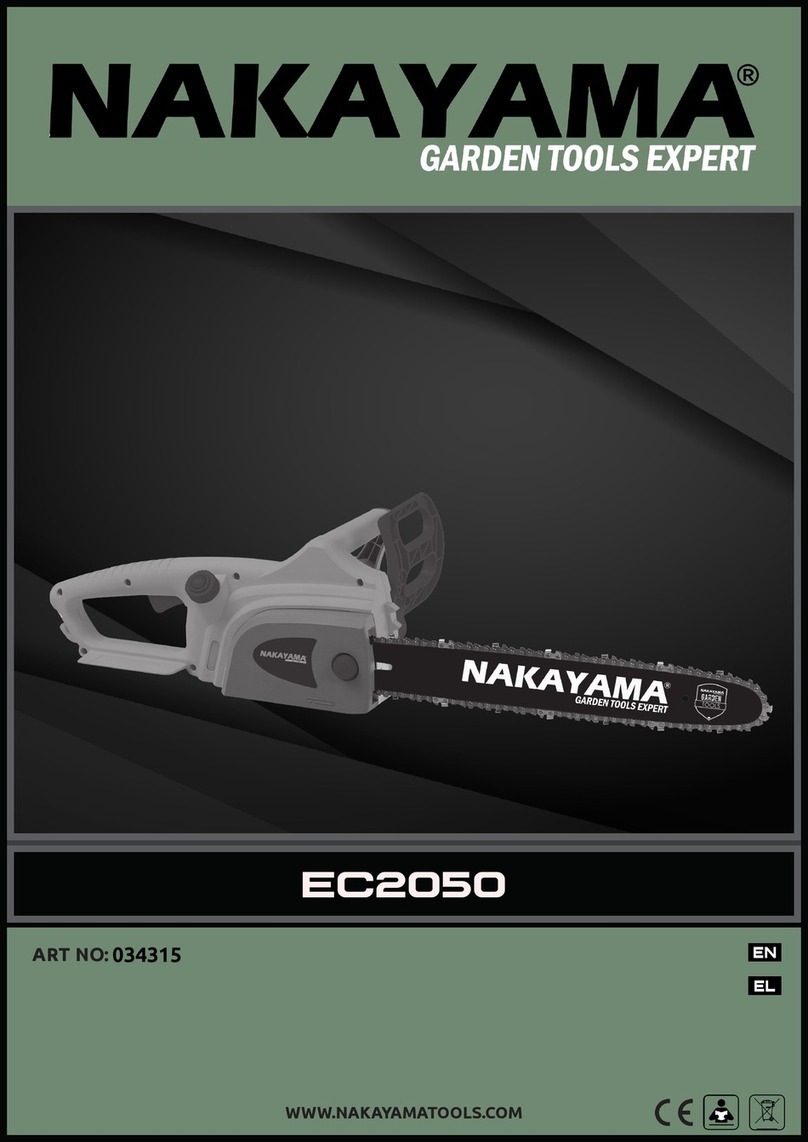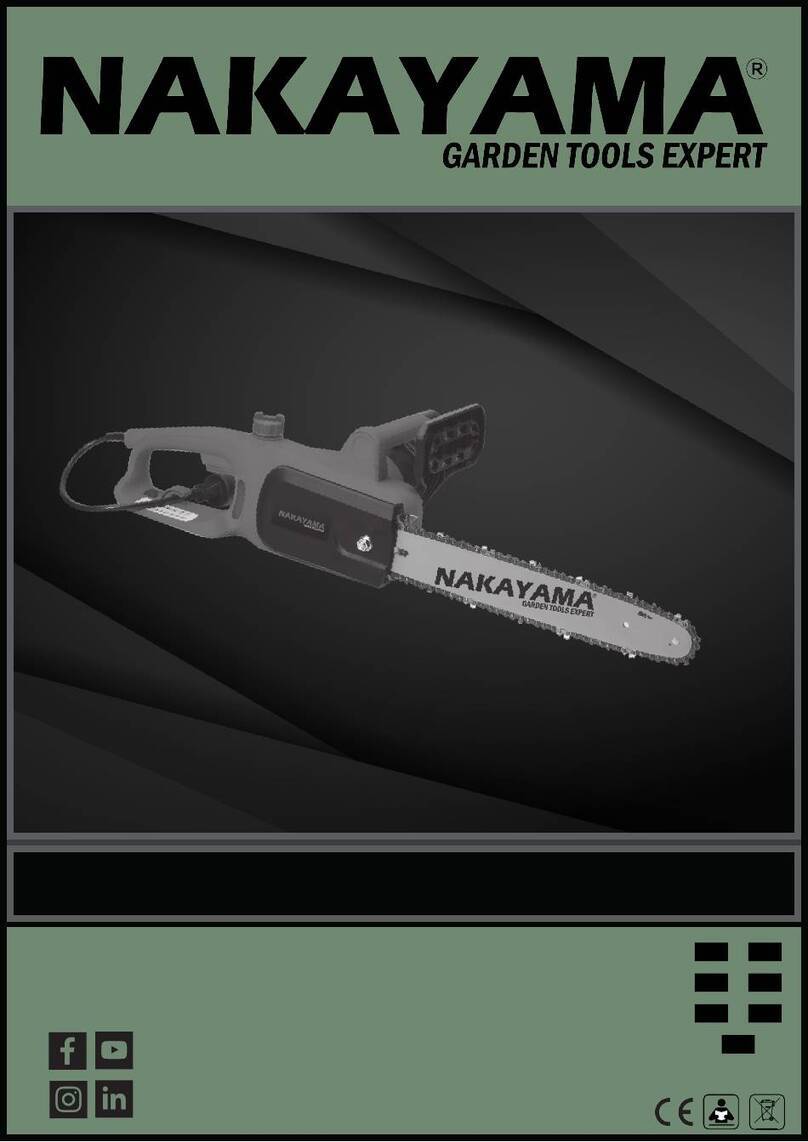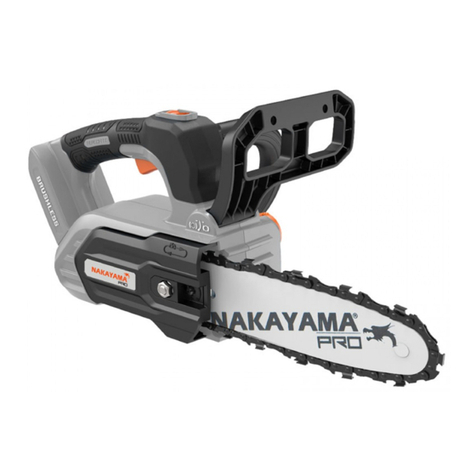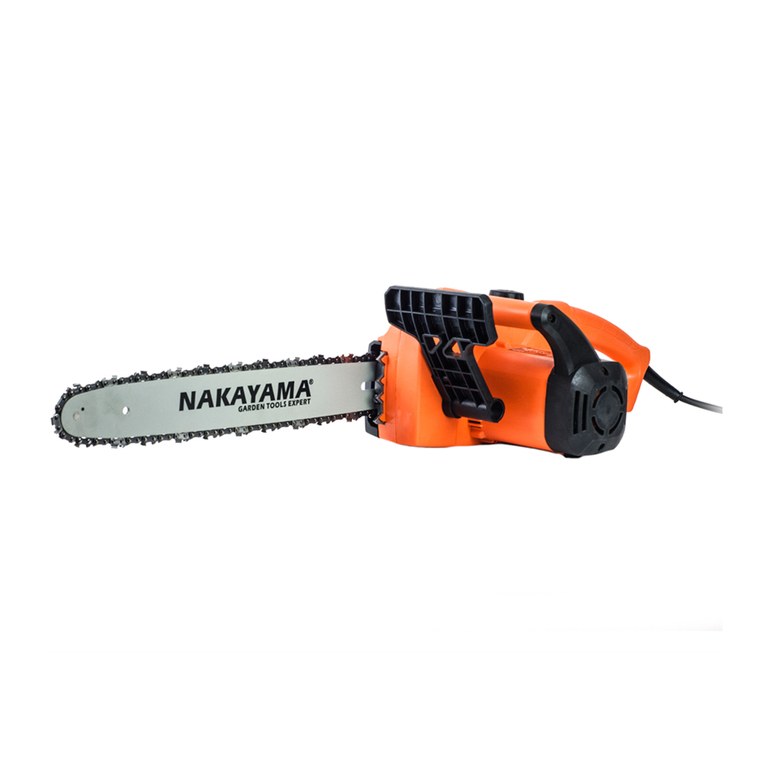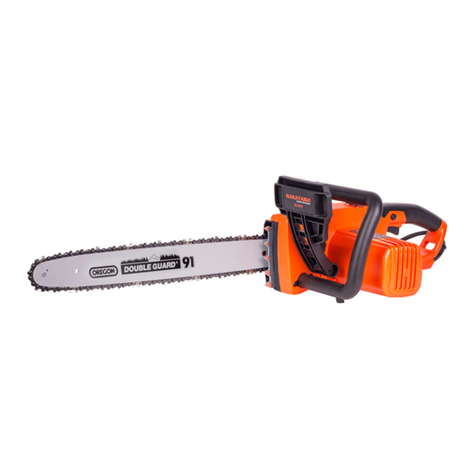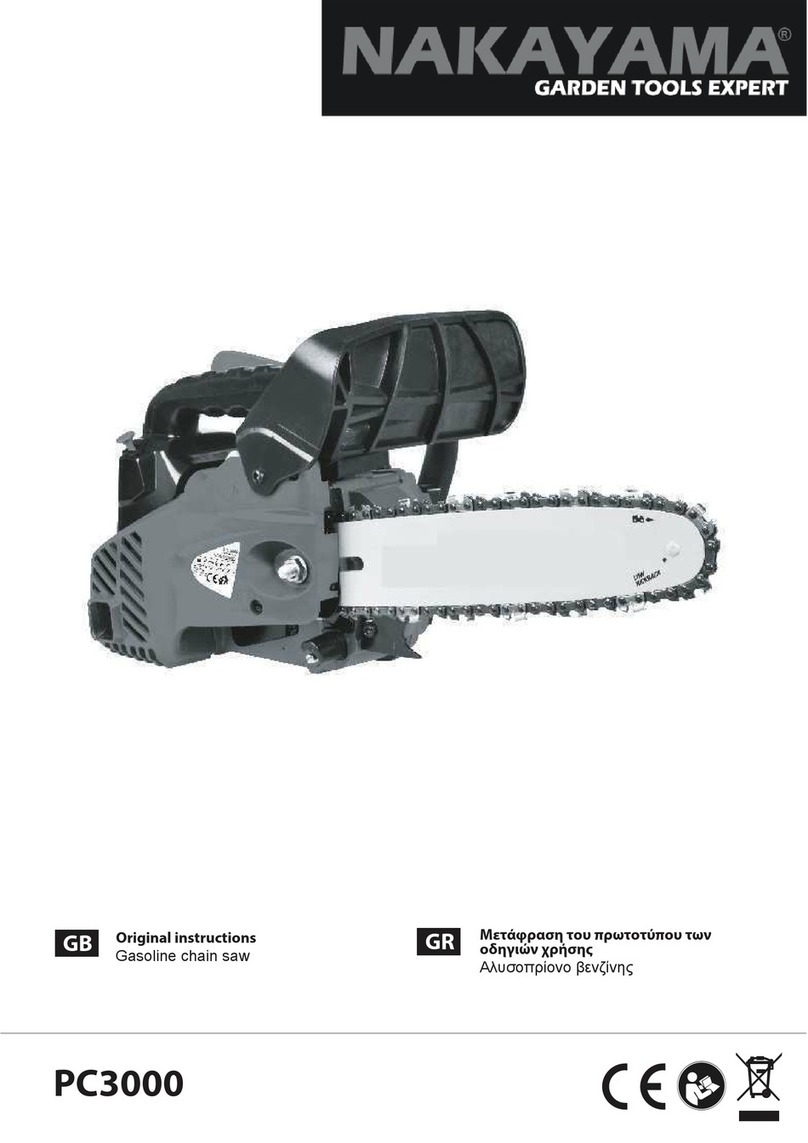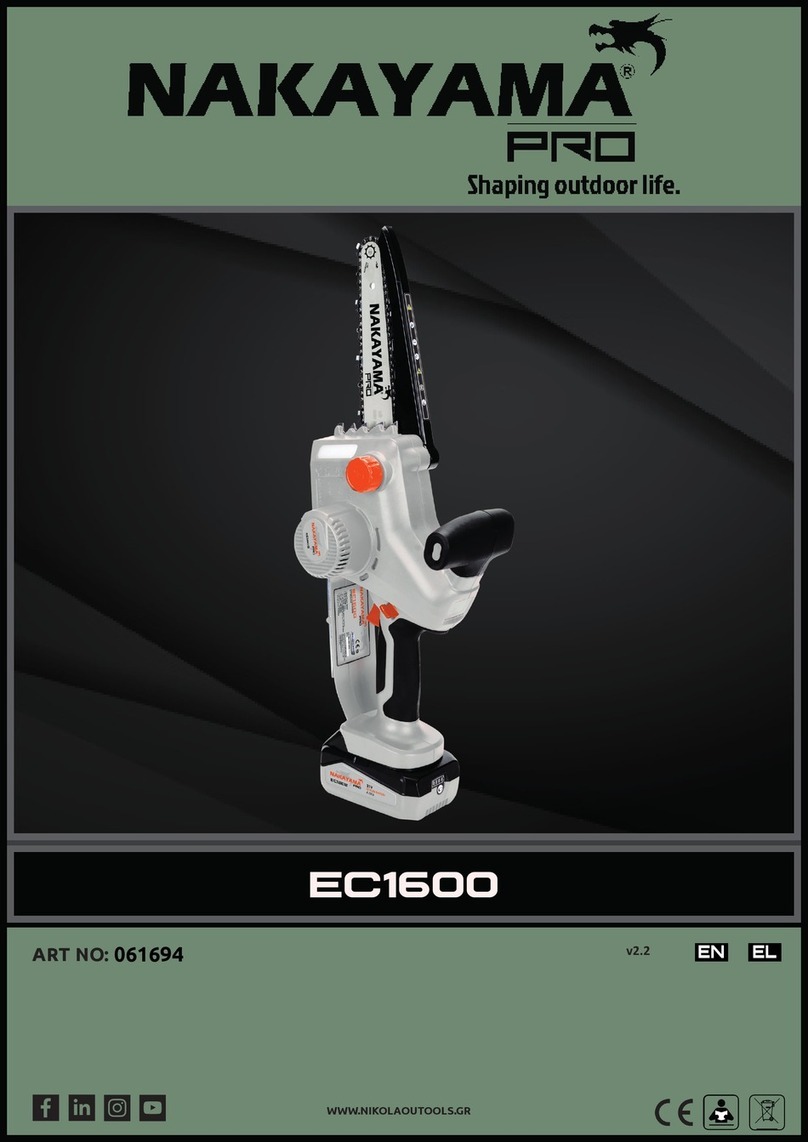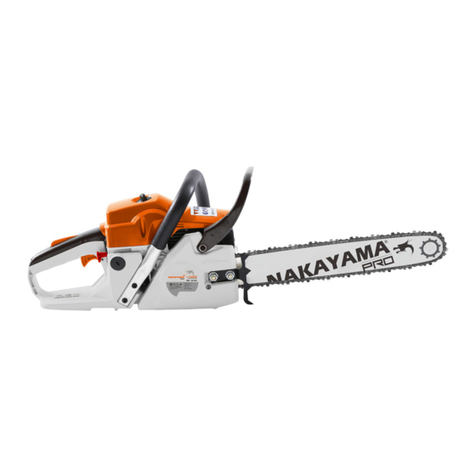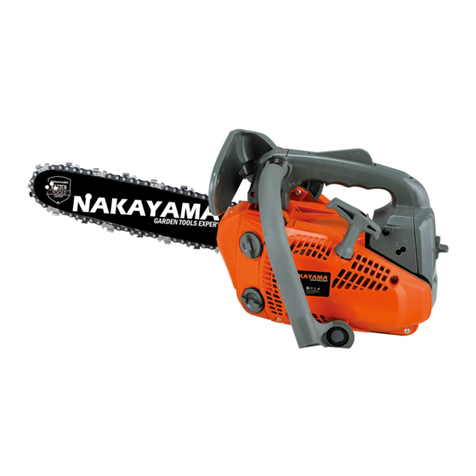
5
Dirt, grease, oil etc. geng into the working parts of the mechanism may lengthen the stopping me.
Wear and fague of the acvang brake spring, and wear of the brake/clutch drum and pivot point may lengthen the brake’s stopping me.
A damaged hand guard and lever may render the brake inoperave.
Other safety precauons
A condion called Raynaud’s Phenomenon, which aects the ngers of certain individuals, may occur aer exposure to cold and vibraon. Accordingly, your
chainsaw has shock mounts designed to reduce the intensity of vibraon received through the handles.
Exposure to cold and vibraon may cause ngling and burning followed by loss of color and numbness in the ngers. Take the following precauons to avoid
triggering such a condion:
Keep your body warm, especially the head and neck, feet and ankles, hands and wrists.
Maintain good blood circulaon by performing vigorous arm exercises during frequent work breaks and also by not smoking.
Limit the number of hours of chain saw operaon. Try to ll a part of each work day with jobs other than chain sawing.
If you experience discomfort, redness and swelling of the ngers, followed by whitening and loss of feeling, consult your doctor before further exposing yourself
to cold and vibraon.
Over-using the muscles and tendons of the ngers, hands, arms and shoulders may cause soreness, swelling, numbness, weakness and extreme pain to these
areas. To reduce the risk of repeve stress injury, do the following:
Avoid using your wrist in a bent, extended or twisted posion. Try to maintain a straight wrist posion.
When grasping, use your whole hand, not just the thumb and index nger.
Take periodic breaks to minimize repeon and rest your hands.
Reduce the speed and force in which you do the repeve movement.
Do exercises to strengthen the hand and arm muscles.
Consult a doctor if you feel ngling, numbness or pain in the ngers, hands, wrists or arms.
Machine condion
Do not operate a chainsaw that is damaged, improperly adjusted, or not completely and securely assembled.
Do not operate the chainsaw with a loose or defecve muer.
Be sure that the saw chain stops moving when the throle control trigger is released.
Warning: Use only the approved spare parts and accessories. Using spare parts other than original parts, accessories and guide bar/chain combinaons or
lengths bring a high risk of accidents. We accept no liability for accidents and damage resulng from the use of unapproved sawing aachments or accessories.
Cung
Operang a chain saw safely requires a chainsaw in proper working order, sound judgement, and knowledge of the appropriate cung methods for each
situaon.
Use your chainsaw only to cut wood or wood byproducts. Do not cut solid metal, sheet metal, plascs or any non-wood materials.
Do not let any person use your chainsaw unless they have read this operator’s manual and fully understand all the safety precauons and instrucons.
Never let children operate the chainsaw.
Keep all parts of your body away from the saw chain when the engine is running.
Use extreme cauon when cung small-size brush and saplings because slender material may catch the saw chain and and knock it towards you or pull you
o balance.
When cung a branch that is under tension, be on the lookout for a recoil so that you do not get hit by the branch or chainsaw when the tension is released.
Using a spiked bumper when cung trees and thick branches can ensure your safety and decrease the working strength and vibraon level. Push the bumper
into the trunk using the rear handle. Push the front handle in the direcon of the cung line. The spiked bumper should remain set to further guide the saw
if necessary.
Stay on the uphill side when bucking or lambing logs which might roll when cut.
Keep both feet on level ground while working. Do not work from o-the-ground posions.
Cung while on a ladder is extremely dangerous because your control of the chain saw is limited.
Do not operate a chainsaw on a tree unless you have been specically trained to do so.
Working alo should be le to professionals.
Stop the engine before seng the chain saw down.
Transportaon
Secure the machine during transport to prevent loss of fuel, damage or injury.
When transporng your chain saw, use the appropriate guide bar cover.
Carry the chain saw with the engine stopped, the guide bar and saw chain to the rear, and the muer away from your body.
Maintenance
Have all maintenance, other than the recommended procedures described in the instrucon manual, performed by an authorized service dealer.
Use only the recommended approved spare parts. Use of any other parts will void your warranty and may cause damage to your unit.
Do not use any accessory or aachment other than those recommended by the manufacturer for use with your unit.
EN
WWW.NIKOLAOUTOOLS.GR
